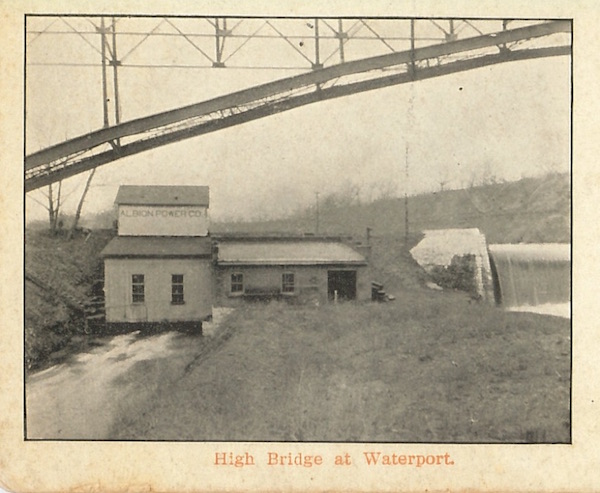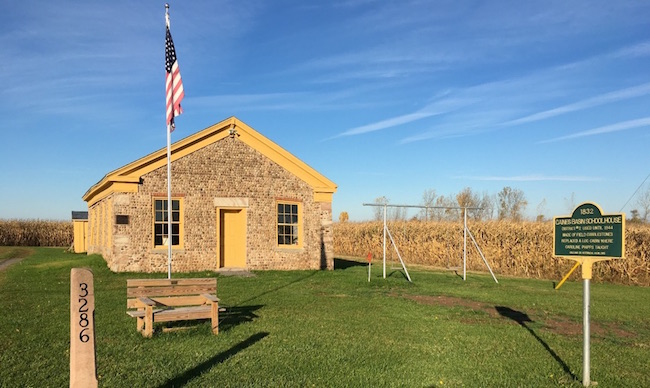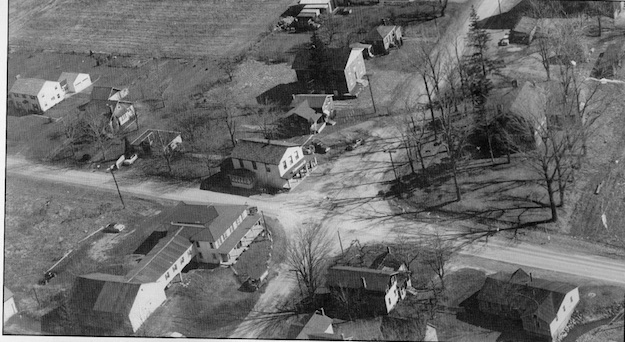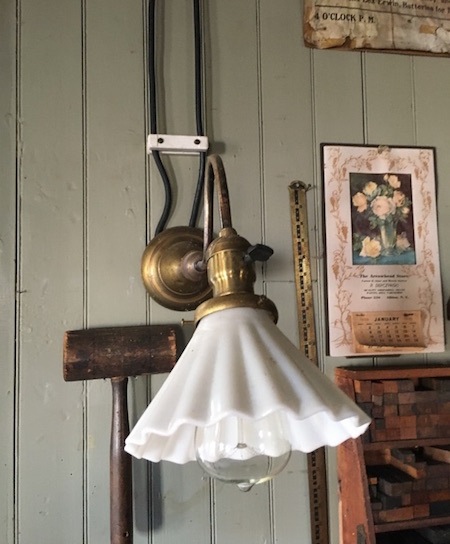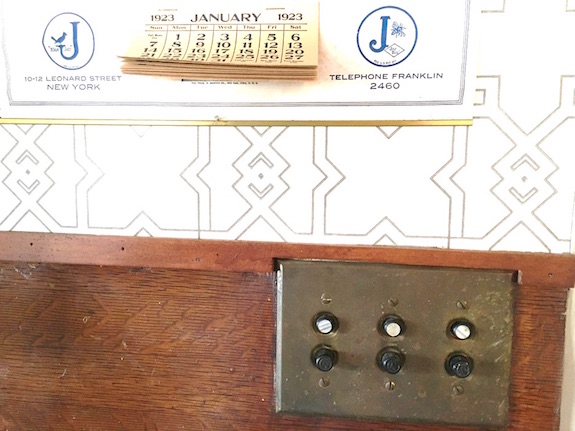Historic Childs: Electricity came to Gaines hamlet in 1926, with many embracing a more modern life
Not everyone was quick to hook up to new system – ‘You don’t miss what you never had’

Photos courtesy of Cobblestone Museum
By Doug Farley, Cobblestone Museum Director
GAINES – Burning candles or kerosene were two ways the school, the church, homes and businesses in the Hamlet of Childs would have provided lighting in the 1800s as seen here in this kerosene lamp fixture in the Universalist Church at Childs.
Note the glass “smoke bells” above the lamps that were designed to protect the ceiling by capturing the soot that was released when burning kerosene. Kerosene lighting was augmented with a product called “manufactured gas.”
The Albion Gasworks manufactured gas from 1858-1927. They did this by heating coal in a “retort” which produced a gas vapor that was stored under pressure to provide lighting for their customers. The byproduct produced from the process was known as “coke,” and was burned to provide heat in many early homes.
The next generation of lighting followed in 1888 when The Albion Electric Light & Power Company began generating power below the steel arch bridge from their hydroelectric station at Waterport. They distributed power using transmission lines that ran south along what we know as NYS Route 279.
Photo courtesy Orleans County Historian
One of the first major usages of Albion Power electricity was for electric arc street lights in the Village of Albion beginning April 1890. Here we see a community effort to raise a power pole in Albion.
Even though electricity was available at that time, there was a certain reticence to hook into the line. For instance, the Pullman Church always had power when it was built in 1894, but the nearby St. Joseph’s Church waited until 1913, and the Episcopal Church didn’t electrify until 1914. There is an adage that says, “You don’t miss what you never had.” That was the case for many homeowners, too.
Former Orleans County Historian Bill Lattin remembers his father, Cary Lattin, telling him that he had electric wiring installed in his house on Gaines Basin Road when it was built in 1932, even though electricity was not yet available on the road.
Lattin lobbied his neighbors to try to drum up enough interest to entice the electric company to send power up Gaines Basin Road. But, Lattin had little success talking his neighbors into spending the money to add electricity to their homes in the era of the Great Depression.
Lattin finally succeeded in his quest when he convinced his fellow taxpayers of the Gaines Basin School that they should have electric lights in their schoolhouse. The neighbors’ favorable decision was responsible for power being distributed on the road. Lattin hooked up right away, but many neighbors waited awhile to follow suit.
Electricity finally reached the Hamlet of Childs circa 1926. Other parts of the county weren’t fully electrified until after World War II. This is a birds-eye view of Childs in the early 1950s.
In the early days, those who wanted electricity in their homes would install “knob & tube” wiring on their interior walls. The two wires were plainly visible to the homes occupants and were held away from touching the wall using porcelain insulators.
Ceramic insulators were also used for switches to help protect from stray electrical shocks. Here we see an early turn-button switch that was commonly used.
Other switches used push-buttons. Another oddity of that era was that fuse boxes were sometimes installed in a home’s attic instead of the basement. The electric lines entered the home through the attic, so it made sense at the time to place the fuse box there, too, albeit a little inconvenient to change a fuse. In later days, wiring was recessed behind walls, like we know it today.
Editor’s Note: This is the 14th article in a series about historic Childs in the Town of Gaines. The hamlet of Childs lies just north of Albion at the intersection of Routes 104 and 98. In 2019, Childs was selected to be on the Landmark Society of Western New York’s “Five to Revive” list. In 1993, the federal U.S. Department of the Interior declared the Cobblestone Museum in Childs a National Historic Landmark, the first site in Orleans County with that distinction.
The next article will take a look at the proliferation of labor savings appliances that found prominence in the all-electric home of the Roaring ’20s.
























